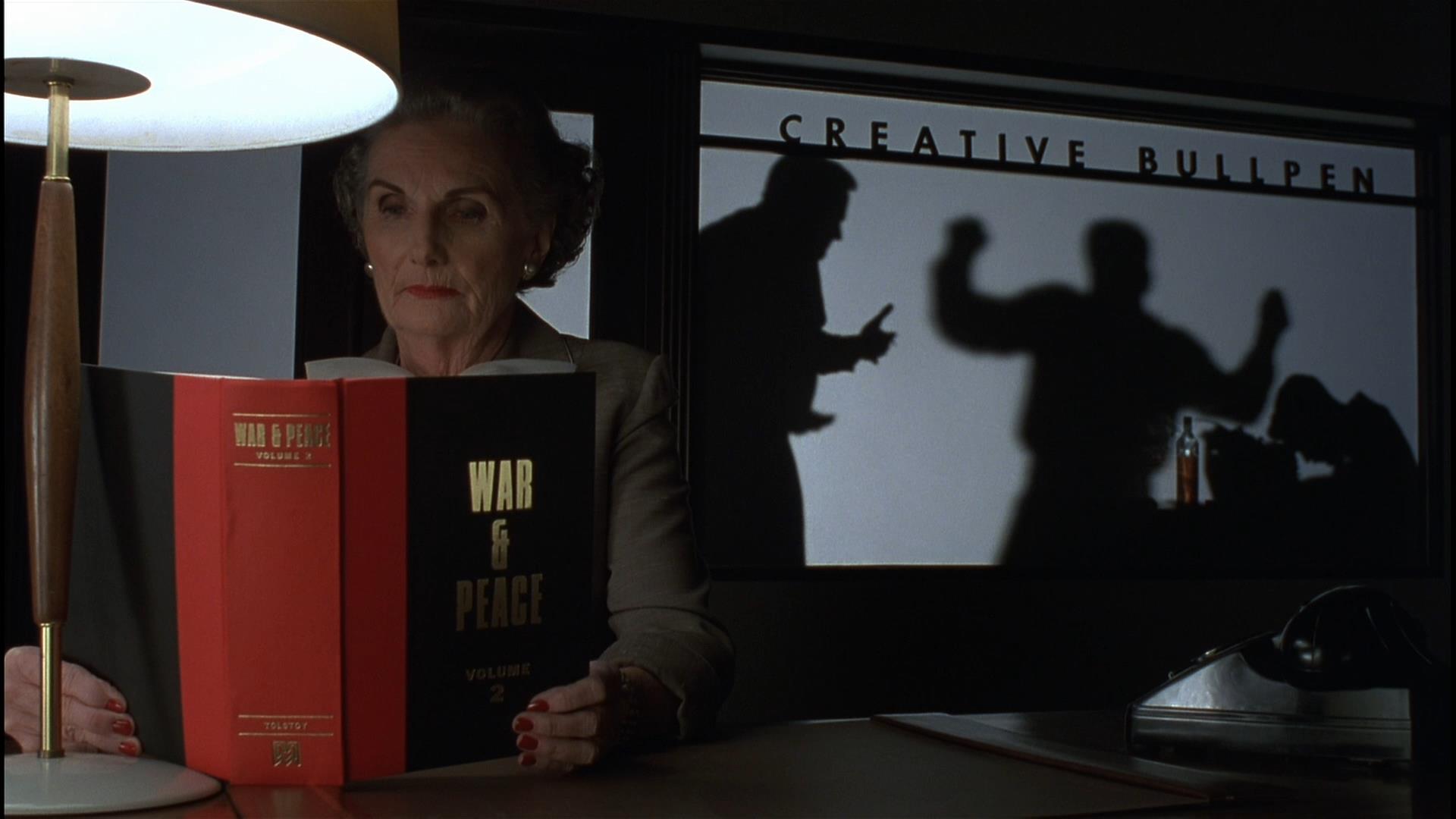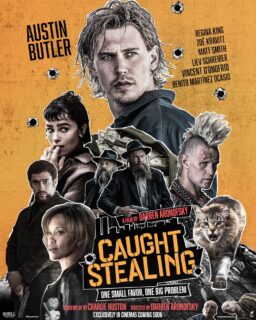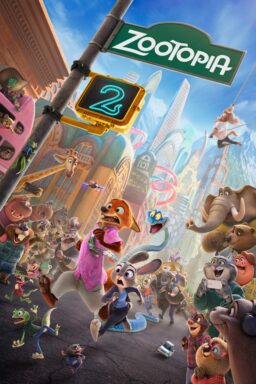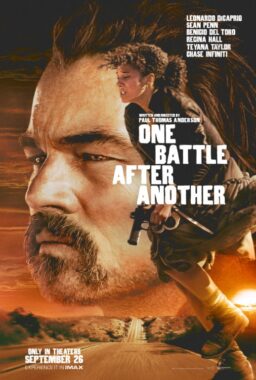Editor’s Note: “The Hudsucker Proxy” screens December 16 at midnight at IFC Center in New York City, in a nearly pristine 35mm print. For details, click here.
A critical and box-office bomb when it came out in 1994, the big business comedy-fantasy “The Hudsucker Proxy” looks better and smarter by the year. The filmmaking team of Joel and Ethan Coen made the film on the heels of “Blood Simple,” “Raising Arizona,” “Miller's Crossing” and “Barton Fink” (you might call it the third entry in their consecutive series of Fedora Films). Their co-writer and second unit director was none other than cult horror filmmaker and future “Spider-Man” helmer Sam Raimi, with whom they once shared a house in Los Angeles (supposedly at one point their flatmates included future Oscar winners Frances McDormand and Holly Hunter—quite a brain trust in that bungalow). The tone of “Hudsucker” is madcap, the scale epic, and the script is a pastiche of elements taken from filmmakers that the Coens adore but who wouldn’t ordinarily seem compatible (indeed, most critics argued that they still weren’t compatible).
The sunny idealism and ultimate expression of faith in humanity echoed Frank Capra—in particular his 1946 classic “It's a Wonderful Life,” which, like “Hudsucker,” is about a man who tries to commit suicide on a snowy holiday evening only to be miraculously saved. The eccentric characters speaking in colorful hard-boiled patois was pure Preston Sturges. But the enormous building interiors, interlocking gears, dramatic silhouettes and spectacular shots of miniature cityscapes (complete with multiple layers of gently falling snow, which wasn’t easy to do elegantly before the refinement of CGI) take their cues from comedies about the oppressiveness of urban-industrial life: “Playtime,” “Brazil,” “Modern Times,” “Metropolis.” Officially, the budget was $25 million, the Coens’ biggest up until that point; some sources say it ended up being closer to $40 million. Today, adjusted for inflation, the movie would cost about twice that—but of course, the very idea of a major studio releasing a film like this today is laughable. It was an outlier in 1994, too. If action movie producer Joel Silver (the “Lethal Weapon” and “Die Hard” series) hadn’t championed this odd project, it’s likely it never would have made it to screens long enough to be lambasted as indulgent, mean-spirited, cynical, and unfunny.
It’s usually an overstatement to say that audiences weren’t ready for a film at the time of its first release, but in this case I think it applies—and maybe it still applies, because of the persistent belief that the Coens are misanthropic, cynical, are privately snickering at their characters, etc. In a lot of ways, the Coens are still misunderstood, despite winning multiple Oscars spread out over twenty-plus years and racking up a number of legit box office hits (including “O Brother Where Art Thou?” and their remake of “True Grit”). There’s still a sense that they have a nihilistic streak, that they enjoy watching their characters suffer and be humiliated. I’ve never really felt that; I think they take a certain disgusted amusement in showing how cruel humankind can be, but that’s not the same thing.
Also, I think they love innocent or naive people, as long as they aren’t being cruel or self-serving, even if (maybe especially if) those characters are blithely stupid and just sort of skip through life as if it’s a field of daisies. While watching “The Hudsucker Proxy” again on a big screen as part of a midnight movie series (of Christmas films, a sub-genre this really isn’t an example of; maybe it snuck in because it opens and closes on New Year’s Eve and has a lot of snow?) I was struck by what I perceived as a quality of lament, that in the words of a character in “Raising Arizona,” sometimes it’s a hard life for the little things. “The Hudsucker Proxy” is a spiritually attuned critique of capitalism, as grandiose as that probably sounds, specifically how the gears of the capitalist economy (visualized literally here, in those closeups of the clock’s interior) tend to torment and emotionally grind up anyone who isn’t viciously self-interested to start with. On its simplest level, the movie is saying that there’s more to life than money, yet much of civilization (and specifically the post-World War II U.S. circa 1958) believes the opposite. Corny, maybe. But not wrong.
The hero, Norville Barnes of Muncie, Indiana (Tim Robbins), is a Candide-like fool stumbling through life, rather like the title character of “Forrest Gump,” which coincidentally was released a few months later that same calendar year but went on to become a smash hit and win multiple Oscars. Norville is randomly elevated to the position of president of the Hudsucker Corporation after the suicide of its founder, Waring Hudsucker (Charles Durning), as part of a conspiracy to depress the stock price and allow for a takeover by a group led by Waring’s right hand man, Sid Mussburger (Paul Newman). Norville is targeted for exposure by an ambitious reporter named Amy Archer (Jennifer Jason Leigh). She ends up falling for him even as she’s destroying his fragile and mostly undeserved success, and Norville ends up being scapegoated and hounded (citizens even chase him through the streets like Frankenstein’s monster) simply for being a patsy set up by greedy, powerful men.
There’s a lot going on both visually and narratively in the movie, especially in setpieces like the Hula Hoop sequence, Norville’s first arrival in the city, and the opening and closing montages (narrated by Bill Cobbs’ clock-minder Moses, who veers a little too close to the Magical Negro trope for comfort, though he ultimately feels both lived-in as a character and representative of the film’s working class sympathies). “Hudsucker” is so visually busy, so overwhelmingly elaborate (like a giant clock of a film), that one can see how its deeper meanings might not register on first viewing. But they’re there. Specifically they’re present in the recurring imagery of circles and lines. It’s rare outside of masters like Stanley Kubrick and Steven Spielberg to encounter an entire major studio feature that’s been worked out on the level of basic symbols and shapes as carefully as this one.
The city is a landscape of tall vertical lines, skyscrapers built with money. Sequences having to do with spending and accumulation of money are driven by lines as well: assembly lines, the pipes that take pneumatic tubes from one office to another, the vertical and horizontal line-grids of balance sheets and stock price charts, the squiggly line of ticker-tapes being spat out, the lines of the streets where cars carry newspapers and hula hoops and other goods, and where suicide jumpers eventually end up. But within this forbidding grey urban grid you encounter circles that hint at a set of eternal values or rhythms. It’s these eternal values of mercy, kindness, devotion, community and sacrifice that industry and money seek to deny, or divert our attention from—a life beyond the wage slavery of the Western-style economy, which separates the haves and have-nots by an increasingly vast gulf.
The most obvious circles in “Hudsucker” can be found in the face of the clock on the top of Hudsucker headquarters, and the circular gears within it, tended by Moses (the name of a Biblical character who freed the slaves; note that the film’s main theme is “Love Theme of Spartacus and Phrygia,” from Aram Kachaturian’s ballet, another mythic narrative of slaves escaping bondage). The life of straight lines and the life of circles are the same life, the same existence, but we make a choice of how to perceive it, based on what we value. Note, too, the identical juxtapositions of lines and circles on the “blueprints” of the Hula Hoop, the frisbee and the bendable straw (presented by Buzz, who grovels when the threatened Norville fires him, and internalizes the lies that Hudsucker executives fed him about how Norville stole the Hula Hoop idea from him). Circles and lines, lines and circles. Look at them one way, they’re one thing. Look at them another way, they’re another.
Better, “Hudsucker” suggests, to go with the circle, associated with karma (or “kar-mah” as the idiot Norville pronounces it) and linked to the eternal cycles of birth and death, celebrated on New Years’ Eve, when an old man representing this year is supplanted by a newborn baby. Notice how Waring Hudsucker leaps to his death on the top floor of company headquarters just as the baby-faced Norville is entering the building, and how the ghost of Waring saves this man-baby from prematurely offing himself before he’s had a chance to really live. Also how the wobbly neon halo over the angel-Waring’s head evokes Norville’s marvelous invention, which is first embraced by very young children, and how Waring’s feathered wings are echoed in the wing hand gestures that Norville and Amy trade after they do the “Go, Muncie!” chant affirming Norville’s fundamental goodness. And notice the blue letter Norville reads from: Waring’s suicide was caused not by anything happening in the company at that moment, but by the realization that he’d given up a great love in order to devote his life to chasing money. And there’s more to life than that, or should be. What goes around comes around, or should. This movie is a Hula Hoop, just like the ones in the classic montage. At first nobody wanted it; they couldn’t even give it away. In another hundred years, maybe we’ll all own a copy.












